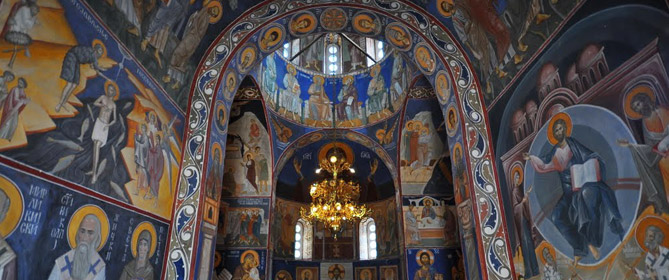Lugovi bb, PSP, 85310 Budva
Phone/fax: +382 33 459 511
Mob.: +382 67 372 211
Skype: suncicaf
E-mail: crnagoraturs@t-com.me
Lugovi bb, PSP, 85310 Budva
Phone/fax: +382 33 459 511
Mob.: +382 67 372 211
Skype: suncicaf
E-mail: crnagoraturs@t-com.me

Pilgrimage — walking the faithful to worship at the holy places, known in ancient times; Pilgrimage is based on the belief in what prayer is more valid in certain areas that have a particular relevance to the gods. So the Greeks and Romans were going to remote temples, the Germans — in sacred groves, the Jews in the great feasts went to Jerusalem. At the time of the Christian pilgrimage is part of the habit in the IV. following the example of St. Helen, who went to worship in the direction of where he lived and taught the Savior, and erected there the Lord’s Cross.
Pilgrimage spread quickly and caused already in the IV. the need for guides to St. ground. From moral considerations pilgrimage to the end of IV. persecuted, but soon recognized the church was pleasing to God and is widely encouraged. In the Western Church, known for the great pilgrimage, such as the Crusades and travel to the Holy Sepulchre, and in Rome, and the small pilgrimage — visiting local domestic shrines. Over time, the church imposed pilgrimage as a kind of punishment or penance, and to the XIII century. and secular courts of Western Europe murderers sentenced to pilgrimage.
In Russia, a pilgrimage to the Holy Land began in the XI century. The first Russian pilgrim was Demetrius abbot Barlaam. In the XII century. pilgrimage was greatly extended and caused coercive measures ecclesiastical authorities to refrain from the pilgrimage undertaken by believers for the salvation of souls. Especially rebels against this mass pilgrimage first Russian writer pilgrim Daniel, who finds salvation and pious deeds possible at home. These measures are not stopped by the zeal of pilgrimage, many pilgrims wandering the domestic shrines in Jerusalem, Constantinople and Mount Athos, formed a special type of pilgrimage, known under the name of ’Calico-perehozhago «that went mostly» militia. «
Old Russian pilgrims borrowed from Western pilgrims their costume; passing through many countries, they listened to a lot of legends, which then together with apocryphal literature distributed in Russia.
By the end of the XV century. noticeable change in the pilgrimage, which caused the weakening of the movement. The reasons for this reduction should be considered a taking of Constantinople by the Turks, who strongly hindered the penetration of Russian in the holy land, and also the fact that, Russian, finding only his people truly — Orthodox holy guard against foreign influence and find holiness in the inner search for God. Due to the weakening of pilgrimage permanently cease and writings pilgrimage that continues until the second half of the XVI century., When once again revived the pilgrimage, on the initiative of the Moscow government to send people to the East with the instructions or alms.
The end of the XVIII century. contributed little pilgrimage and did not leave significant descriptions. Century XIX leave the description traveling Bronnikova «Travel notes and brothers Veshnjakova myadynskago merchant Mikhail Novikov,» and an anonymous note that belonged DV Dashkov. At the same time, made the pilgrimage and AN Ants, Norov, Archimandrite Leonid, AV Eliseev and TI Filippov to study in Palestine.
(Complete Orthodox Theological Collegiate Dictionary, T. II, (Reprint) M .: Concern «Revival», 1992)
Due to the convenience and safety of Railways, pilgrimage is growing every year, an increasing number of countries to which the pilgrims go.